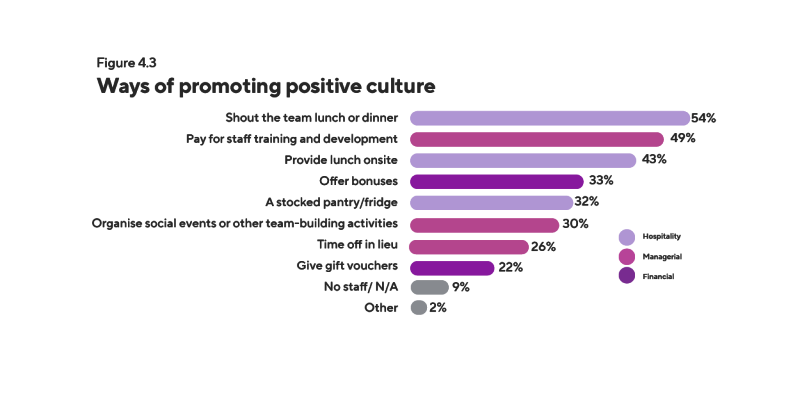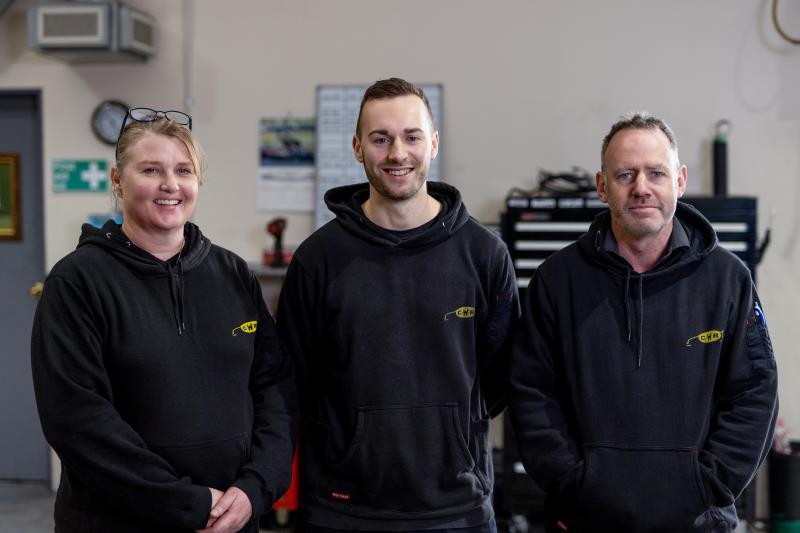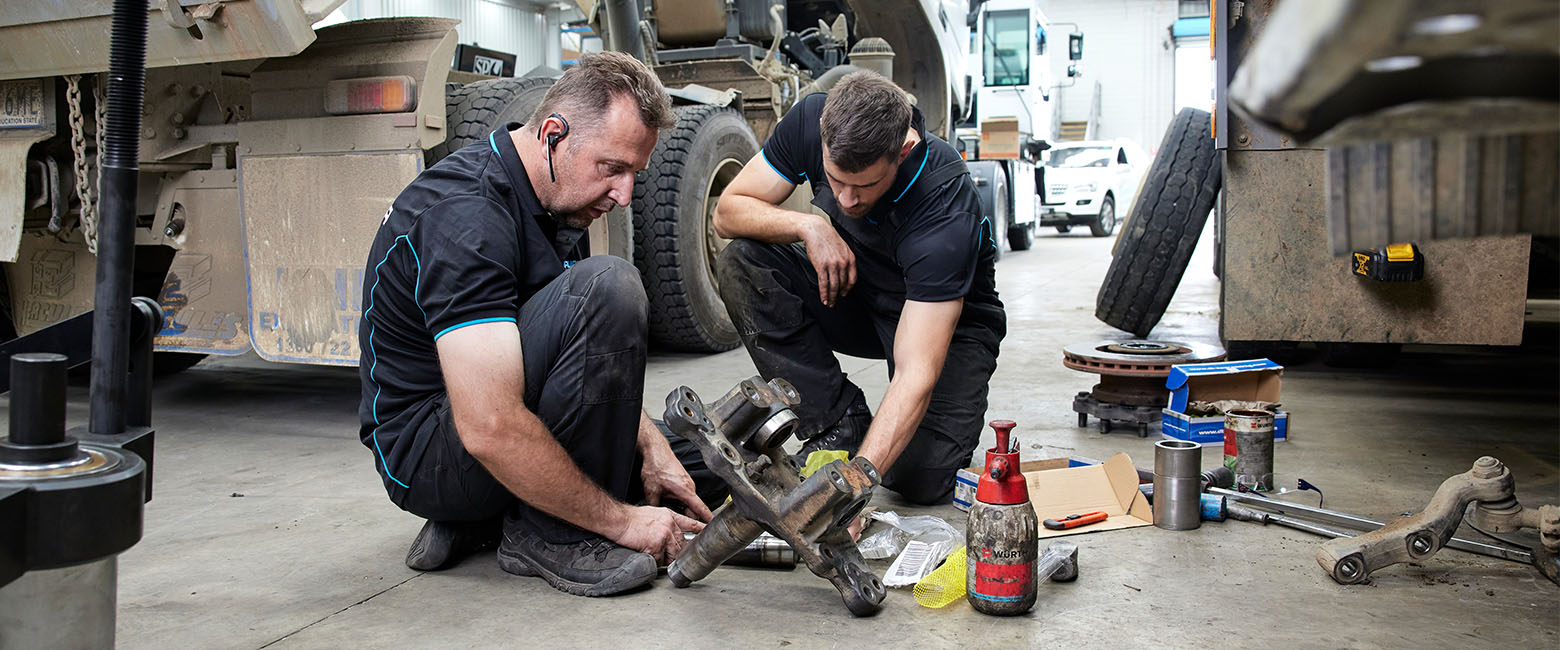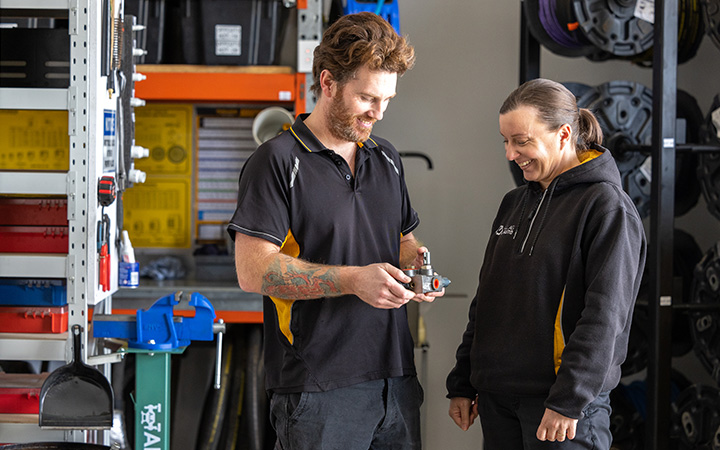It seems the days of staying in a job for 10, 20 or even 40 years are long behind us.
According to Forbes, the average worker stays in a job for just 4.4 years and 91% of millennials (born between about 1980 and 1995) expect to stay in a job for less than three years — which works out to a whiplash-inducing 15 job changes across their career.
Gone are the days when many employees would spend their entire careers with one company, either working their way up the ladder or making themselves indispensable on the workshop floor.
The modern reality of attracting and retaining staff
It’s little wonder, given the data above, that Capricorn’s State of the Nation Report 2021 found many Members were struggling to attract and retain good staff.
- 43% said finding good staff was a top five challenge to running an automotive business
- 11% said they have problems retaining staff
- 35% said having loyal staff was a top five indicator of success in business.
There’s a particular challenge when it comes to the younger generation of employees.
- 37% of Members said one of the biggest challenges facing the industry was attracting young people to work in it
- 46% of Members with more than five staff said attracting younger employees was a top five problem
- 17% said finding good apprentices was a top five challenge.
So, what’s the solution? How can our industry attract and retain good employees and, in particular, attract and retain younger employees for the long-term?
It’s about creating a good workplace culture — a physical, mental and emotional environment where people want to work.
What does a good workplace culture look like?
A third of Members told State of the Nation that having a good workplace culture was a key indicator of success in business. But what kinds of methods are Members using to create that culture?
Here’s what they told State of the Nation.

But can creating a good workplace culture really be as simple as shouting the team lunch once in a while?
In short, no. While it can be a useful way of showing your employees they are appreciated, buying Nando’s once a week won’t, in itself, create a positive workplace culture. It has to be part of a much larger picture.
Here are some suggestions for proven ways to improve workplace culture if you want to attract the best talent, particularly young talent, and then keep your best employees once you have them.
Decide a clear set of shared values and expectations
What are the values you expect those who work for you to share? Deciding what these values are, communicating them to staff, and leading by example help create a culture that upholds those values.
Those values might be, for example:
- Dignity and respect
- Honesty, accountability and reliability
- Paying attention to detail
- Delivering on promises to customers and each other
- Tolerance
- Taking the initiative.
Hire people who fit your culture
When you’re interviewing for a new staff member, don’t just check what skills and qualifications they have, make sure they share your company values.
Onboard and train them well from day one
Make your new team members feel welcome from day one with a proper onboarding process that thoroughly explains what is expected of them, where everything is, who everyone is, and what your company values are.
It’s all about making your newest employee feel welcome, so they can hit the ground running and become productive, profitable members of the team as quickly as possible.
Avoid the alternative “sink or swim” approach, as this is far more likely to sow the seeds of doubt in your new recruit’s mind. Similarly, there’s really no place for old-fashioned “initiations” in a modern workplace, as they can easily go too far, constitute bullying, and indicate a lack of professionalism that reflects badly on the business.
Focus on employee comfort, safety, health and wellbeing
Health and safety are no laughing matter. Show your team they are valued by making them feel as safe and comfortable as possible in the workplace.
- Keep the workshop clean, tidy and well organised, with no tools left on the ground and designated walkways kept clear of clutter
- Have clear safety procedures in place and insist they’re followed
- Invest in protective gear like goggles and gloves and insist staff wear them for tasks that involve relevant risks
- Have health and safety rules clearly posted in the workshop, hold regular safety reviews (and fire drills, etc.)
- Encourage staff to report and act on hazards, to eliminate risks and make the workplace as safe as possible
- Invest in tools and equipment that make the workplace safer and eliminate risks for employees who have particular health issues (e.g., a bad back)
- Take health and safety seriously: don’t let it become a punchline for jokes and banter.
Encourage communication and collaboration
How often in life do things go wrong or get worse because people don’t communicate properly? Clear communication and good collaboration are essential in any workplace.
Encourage excellent communication by setting up clear channels for sharing information, whether that’s a daily meeting, a whiteboard on the wall showing what everyone is doing, or even a staff Yammer or Slack channel.
Make sure staff know communication runs two ways, and you want them to come to you with problems, suggestions and improvements.
Create a strong sense of identity and professionalism
Lifting the visual standard of your workshop won’t just impress your customers, it’ll create a greater sense of pride among your staff.
Keeping the workshop tidy, having a smart uniform with your company logo, and keeping surfaces like the front door and reception counter clean, all help to give a strong sense of professionalism.
Identify, encourage, embrace and build up talent
People often leave jobs where they don’t get the chance to do something they enjoy or have a particular interest in. If an employee has an interest in or aptitude for a particular thing, encourage it. Send them for more training, get them to share their knowledge with other employees, and praise them for their efforts. It goes a long way to making a staff member feel appreciated.

Facilitate lifelong learning
Almost half of Members told State of the Nation they would pay for staff training and development as a way to promote a positive workplace culture. It’s an excellent way to do it because it shows your employee you think they’re worth investing in (and you want them to stick around) while also tangibly improving your productivity and the service you’re able to provide your customer.
Encourage your team to nominate training they’d like to do and invest in it as part of your internal reward scheme.
Increase employees’ responsibilities
It might seem counterintuitive, but people like to be given more responsibility. It shows you trust and value them, gives them a feeling of importance and independence, and can lead to them being more productive, more innovative, and happier.
The alternative might be to feel micromanaged, bored, under-appreciated, and frustrated — none of which are conducive to staying in a job long-term.
Build in flexibility where you can
Younger people often expect flexibility in their working arrangements. They might expect to have flexible hours, to be able to do the school run or to work from home occasionally, for example.
Depending on the role, in a workshop environment many of those flexible working arrangements can be difficult to accommodate. However, where you can build that flexibility in, it can prevent a build-up in the kinds of frustrations that can easily result in an employee eventually handing in their notice.
Recognise and reward effort and achievement
When someone does something good, acknowledge it. If it’s for something small, it might be a quiet, one-to-one, “well done”. If it’s for something bigger, perhaps it’s a round of applause at a staff meeting, buying in that Nando’s lunch on a Friday, or even a bonus in the form of cash or training.
The point is, people stick around when they feel appreciated, important and valued. Something as simple as a thank you goes a long way towards achieving that.
Focus on your leadership and the talent will follow
Finally, remember that achieving a good workplace — creating a place where people want to work every day, and where they’ll want to stay for the long-term — is down to you.
The behaviour you exhibit and the behaviour you tolerate set the tone for everything and everyone else.
Set your company values and don’t just live by them, let your employees see you live by them. Do that and hopefully you’ll attract and retain quality staff for years, perhaps even decades.
Download your free copy of State of the Nation 2021.


